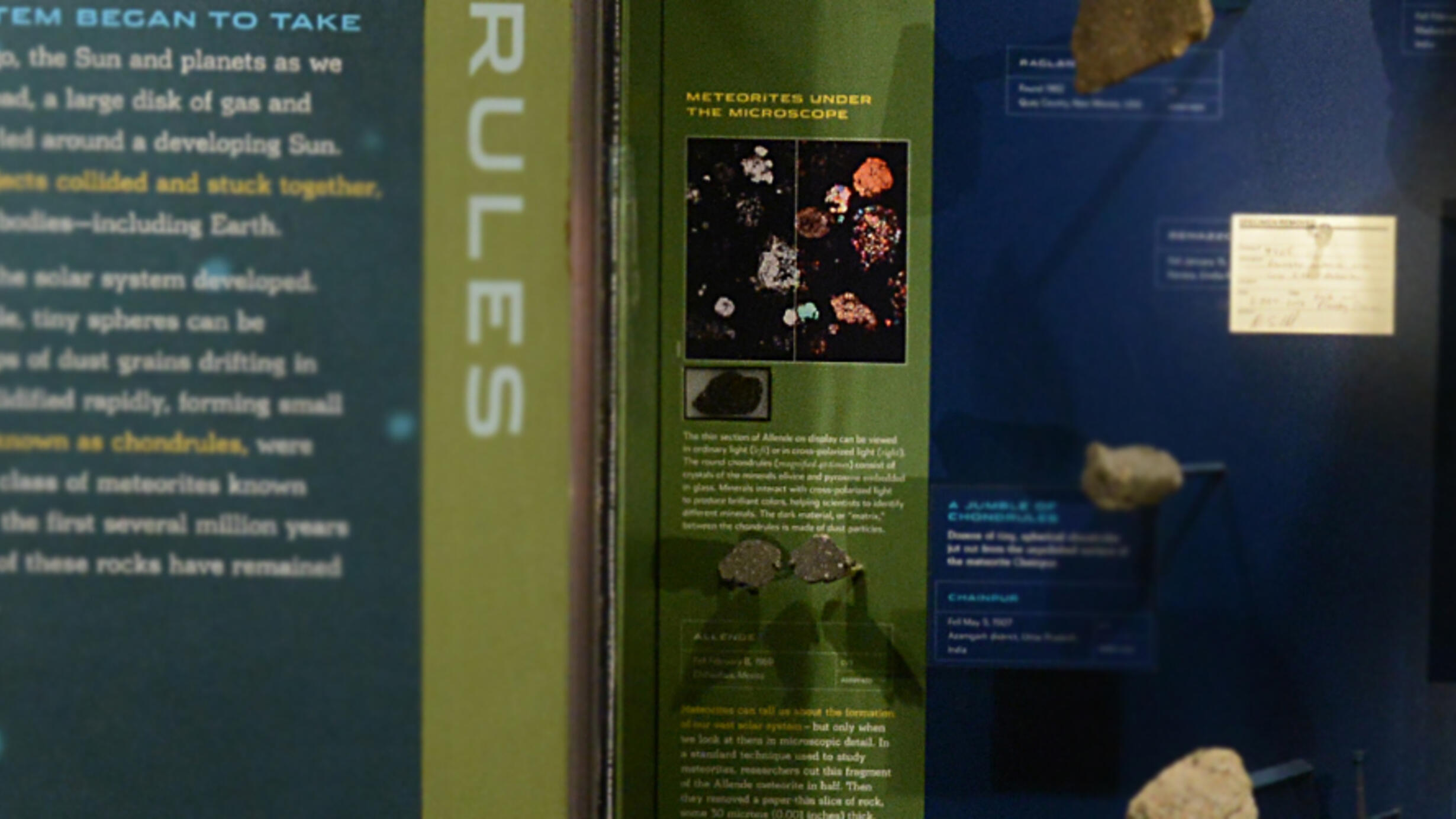Meteorites under the microscope
Part of Hall of Meteorites.

Meteorites can tell us about the formation of our vast solar system-but only when we look at them in microscopic detail. In a standard technique used to study meteorites, researchers cut this fragment of the Allende meteorite in half. Then they removed a paper-thin slice of rock, some 30 microns (0.001 inches) thick, mounted this "thin section" on a glass slide and looked at it under a microscope. This technique dates back to the mid-1800s, when geologist Henry Clifton Sorby first looked at rocks, including meteorites, under a microscope.
Microscopic analysis reveals that meteorites are made of many components, reflecting the mix of material in the early solar system. Rounded chondrules, dark dust grains and irregularly shaped white nodules are often packed together densely. Sorby himself studied chondrules, the most abundant of these inclusions: recognizing that these glassy spheres were once molten, he called them "drops of fiery rain."